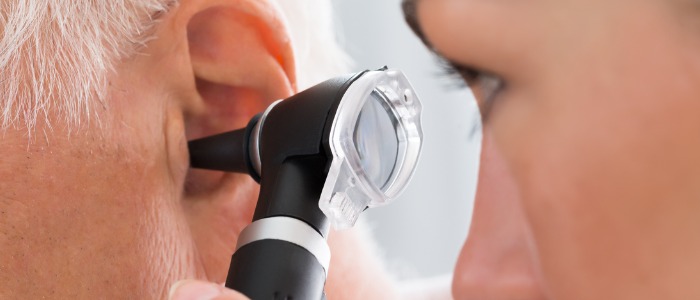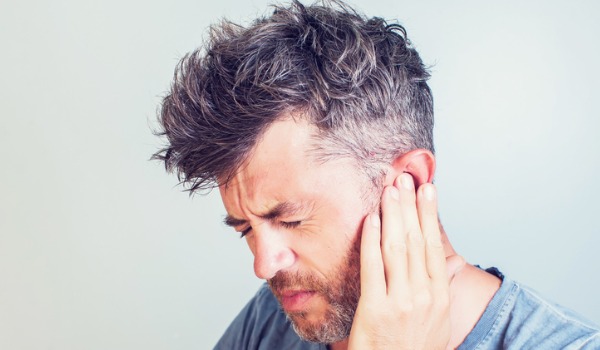Listen up
In Common conditions
Follow this topic
Bookmark
Record learning outcomes

Some 2.3 million people in the UK have problems with excess ear wax that justify intervention, according to NICE, yet ear wax removal is no longer a core service for GPs. Does this represent an opportunity for community pharmacies.
During the pandemic, GPs who still offered the service suspended ear wax removal appointments. In many cases, these have not been reinstated, with some using the opportunity to discontinue their service. Community pharmacy is stepping up to fill the gap.
“Research has shown that despite 45 per cent of the population claiming to have suffered from an ear problem in the past, 51 per cent believe they neglect their ears,” says Earex brand manager Claire Campbell. “Understanding the key factors that affect ear health and the barriers to looking after them creates an opportunity to try to ensure ears receive the attention they need. Community pharmacists play a key role.
“It is important for pharmacists to remind those coming in with ear concerns how important it is to treat symptoms using the correct products, methods and techniques.”
Advice for patients
- Never remove wax or clean ears with cotton buds as this can push wax further inside
- Ear candles have no benefit for wax removal and can cause injury
- If patients develop fever, ear pain, itching, discharge or swelling, they should return to the pharmacy or visit their GP as they may have an infection
When to refer
- There is perforation of the tympanic membrane
- The person has a history of ear surgery
- Foreign body in the ear canal
- Ear drops are unsuccessful and irrigation is contraindicated
- Treatment has been unsuccessful
- The person still has symptoms after successful removal of wax

Who needs this service?
Older people with cognitive impairment are more likely to develop impacted ear wax. Up to 65 per cent of over-65s can suffer, and 28-35 per cent of them will also have cognitive impairment, says NICE. The main at-risk groups for excess ear wax include:
- People over 50, especially older men
- Children under five
- People with narrow or deformed ear canals
- People with Down’s syndrome
- Anyone with atopic eczema or psoriasis
- People who use cotton buds to clean their ears.
Pharmacists are in an ideal position to speak to customers who are concerned about blocked ears. Symptoms to watch out for include hearing loss, pain, itching, odour, discharge, dizziness or tinnitus. According to NICE, ear wax removal should be offered if the wax is contributing to hearing loss or other symptoms, or if the tympanic membrane (ear drum) is obscured by wax but needs to be viewed for a diagnosis or an impression of the ear canal needs to be taken.
How should ear wax be removed?
A build-up of ear wax should first be managed by the customer with ear drops to soften the wax and aid removal. Those to recommend include olive or almond oil, sodium bicarbonate 5% or sodium chloride 0.9% drops. They should be used three to four times daily for three to five days and may initially cause further hearing impairment. In many cases, the softened wax will fall out by itself in the next couple of weeks.
If the ears remain blocked, professional removal can be considered. Manual syringing is no longer recommended, so electronic irrigation (flushing out with water) or the use of a microsuction device are now the methods of choice.
Irrigation should not be attempted if the patient has had previous complications or a middle ear infection in the past six weeks. History of cleft palate, previous ear surgery, a perforation, mucous discharge in the past 12 months, or any signs of otitis externa are all indications against irrigation.
Microsuction is becoming a more popular choice. There are fewer contraindications, but these do include having previous difficulties with the procedure; a history of severe dizziness; an inability to hold the head still or a sensitivity to loud noise.
Setting up an earwax removal clinic
If you’re thinking about offering an ear wax removal service, you will first need to get training for whoever will be involved in running it, and purchase the necessary equipment. There are a variety of training providers for both ear irrigation or microsuction. The training combines theory with practical assessments, and costs a few hundred pounds. Equipment varies in price.
We spoke to pharmacists already offering an ear wax removal service to find out how successful it has been.
Amish Patel, Hodgson Pharmacy, Longfield, Kent
“I first looked into offering an ear health service about two and a half years ago. The number of local GP surgeries offering the service was falling, and those that did had long waiting lists, so it seemed to me like an opportunity for community pharmacy. However, at that time, it wasn’t easy to find training.
A year later, I managed to find a trainer at Rotherham Ear Care Centre. It was a day’s training, plus some reading. The cost of setting up the service, including the training and equipment, was about £2,000.
We use Google to market our service, as well as our website, and I have written to all the local surgeries. Word of mouth is helping too, with some local audiologists now referring patients to us.
Our service runs Monday to Friday, and customers can book online. The cost is £54 for one ear and £80 for two. We use microsuction as it’s the gold standard service, the most effective and safest way. It’s important not to undercut the competition here. Remember, it’s a valuable and skilled service.
Our service has been popular. On some days, I will see eight or nine patients. At the moment, it’s only me that has been trained, but as the service grows, I’m thinking about seeing if other pharmacists want to get trained.
While it is a very safe service, it’s important to remember that there are still some risks involved and to take these seriously.”
Pradeep Duggal, Styvechale Pharmacy, Coventry
“I was looking for an extra service we could offer that could be carried out by members of staff other than just pharmacists, and one where there was a local need, so ear irrigation fitted the bill. We got the training last November and started our service in March. Four of us got trained and it’s the three non-pharmacist staff members who mainly run our service.
The training was a day, with practical assessments and theory. We then had to buy the equipment, which cost around £400.
We have an online booking system. Patients book an initial assessment, and then another appointment for the procedure at least a week later. We currently do about four a week and it’s increasingly popular. We even have local surgeries referring patients to us now.
The feedback from patients and staff has been very good. Customers are so relieved to get it done and to be able to hear more clearly again. For staff, it’s really satisfying to see what a difference they have made to a customer.
It’s important to have at least a couple of members of staff trained so they can share opinions and concerns. If there’s any doubt about whether a patient is suitable, we don’t do it.”
Views of the P3pharmacy category panel
“People often come to a pharmacy while waiting for a GP appointment for antibiotics. Standard analgesics often do the trick for non-complicated ear pain; Ear Calm spray is a favourite amongst patients who have recurrent ear issues. Good sellers are any type of silicon/occlusive ear plug, especially the type you can pinch off to customise. Drops that help expel excess water from the ear canal are becoming popular. It’s important to offer preventative tips so patients don’t have to deal with frequent pain and/or trapped water.”
Marisa Maciborka, Well Pharmacy, Tonteg, South Wales
“We advise that issues are often self-limiting, only requiring painkillers. Customers commonly ask what they can do now that local ear syringing services have stopped. We sell olive oil drops more than any brand. Otex is the next go-to, especially Express for those wanting syringing. It’s important anyone still purchasing cotton buds is asked if they are being used for ear cleaning. Audiclean Ear Cleansing Wash allows for preventative treatment and can open up a conversation about appropriate ear care.”
Gareth Evans, Wansford Pharmacy, Peterborough
“With some surgeries still prioritising the patients they see, ear problems are frequently directed to us in the pharmacy. We have definitely noticed more people choosing pharmacy or being referred to us to seek advice. A typical question would be, ‘I have pain in the ear or my ear is blocked, what can I do about it?’ For blocked ears, our main sellers are olive oil or sodium bicarbonate ear drops. If customers are in pain, they need to specify where the symptoms are. If it is clear there is an outer ear infection, Earcalm is a popular choice.”
Ellis Nugent, Well Pharmacy, Llantwit Major, South Wales
